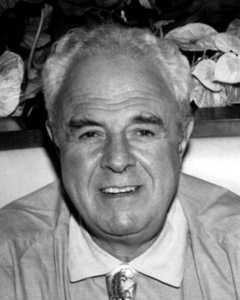Name Oswald Jacoby Role Author | ||
 | ||
Died June 27, 1984, Dallas, Texas, United States Books Intriguing mathematical problems, Magic Cubes: New Recr, Complete canasta, The Backgammon Book, New Recreations with Magi Similar People Ely Culbertson, Sam Stayman, Charles Goren, Helen Sobel Smith, Edgar Kaplan | ||
Oswald "Ozzie", "Jake" Jacoby (December 8, 1902 – June 27, 1984) was an American contract bridge player and author, considered one of the greatest bridge players of all time. He also excelled at, and wrote about, other games including backgammon, gin rummy, and poker. He was from Dallas, Texas and an uncle of activist and author Susan Jacoby.
Contents
Early life
Born in Brooklyn to a Jewish family, he was taught to play whist at the age of six and played his first bridge at ten. During World War I, he joined the army at 15 by lying about his age but spent most of his time there playing poker. Dropping out of Columbia University as a math major to become an actuary, he became the youngest person ever to pass four examinations of the Society of Actuaries at the age of 21. Having an exceptional aptitude for mathematics, Jacoby could multiply three and four digit numbers in his head without benefit of paper. During World War II and the Korean War, he applied these abilities to counterintelligence and cryptanalysis being referred to as a human computer; later, he lectured on probability at M.I.T. and wrote books on mathematics. However, his passion and lifelong focus was games, especially bridge.
Bridge career
By the end of the twenties, Jacoby had achieved fame as a player at both auction and contract bridge, further gaining international recognition when chosen by Sidney Lenz to be his partner in the famous Culbertson–Lenz match of 1931. Jacoby's more aggressive bidding style confused Lenz and Jacoby withdrew after Lenz's criticism. Years later the analyst Terence Reese wrote, "That the Culbertsons did not win more easily ... was due to the fact that Jacoby was a player of quite different class from any of the others". Jacoby subsequently solidified his position as the most successful tournament player in the thirties as a member of the famous "Four Horsemen" from 1931 to 1933 and the "Four Aces" from 1933 to 1941, dominating tournament play. He is recognized by the American Contract Bridge League (ACBL) as Life Master #2, one of ten named in 1936. LM #1 is David Burnstine, his partner on the Four Horsemen and co-founder of the Four Aces.
He pionereed many bidding ideas, including the Jacoby transfer and Jacoby 2NT bids. Throughout his career, he also worked as a bridge columnist; a prolific writer, he wrote over 10,000 newspaper articles on bridge, and his many books include not only bridge but volumes on poker, gin rummy, canasta, and the mathematics of card games and gambling, which he played at high stakes. He also released a record titled How to Win at Championship Bridge.
Jacoby captained the North American and US teams that won the Bermuda Bowl in both 1970 and 1971. During a long playing career, he won tournaments with many partners including his son and co-author, James Jacoby (1933–1991), as well as his wife of more than 50 years, Mary Zita Jacoby. Terminally ill, his final tournament victory came in a major event at the ACBL North American Bridge Championships late in 1983, as a member of the team-of four champions for the Reisinger trophy with Edgar Kaplan, Norman Kay, Bill Root and Richard Pavlicek. In the same year, he was named Personality of the Year by the international bridge writers (Charles H. Goren Award). He died at his Dallas home of cancer on June 27, 1984.
Jacoby, Lenz, and Milton Work were named to its hall of fame by The Bridge World in 1965, which brought the number of members to six. They were all made founding members of the ACBL Hall of Fame in 1995.
Honors
Awards
Wins
Runners-up
Other games
A poker player and author on the subject, Jacoby was convicted of a gambling charge in 1944 while in the navy but acquitted of a charge of conduct unbecoming an officer and a gentleman. Although he did not pursue a career in competitive chess and did not write on the game, he was nevertheless a strong player. When in college, Jacoby beat US chess champion Frank Marshall, and in 1963, in a rapid-transit game, he played a draw with Tigran Petrosian, the then world champion.
Jacoby was also an expert backgammon player, and in 1972 he was crowned World Backgammon Champion. In 1970, he wrote The Backgammon Book with John R. Crawford, which is considered the first book to deal with backgammon from an analytical viewpoint. The Jacoby Rule, which states that gammons and backgammons count only after the cube has been turned, is named after him.
